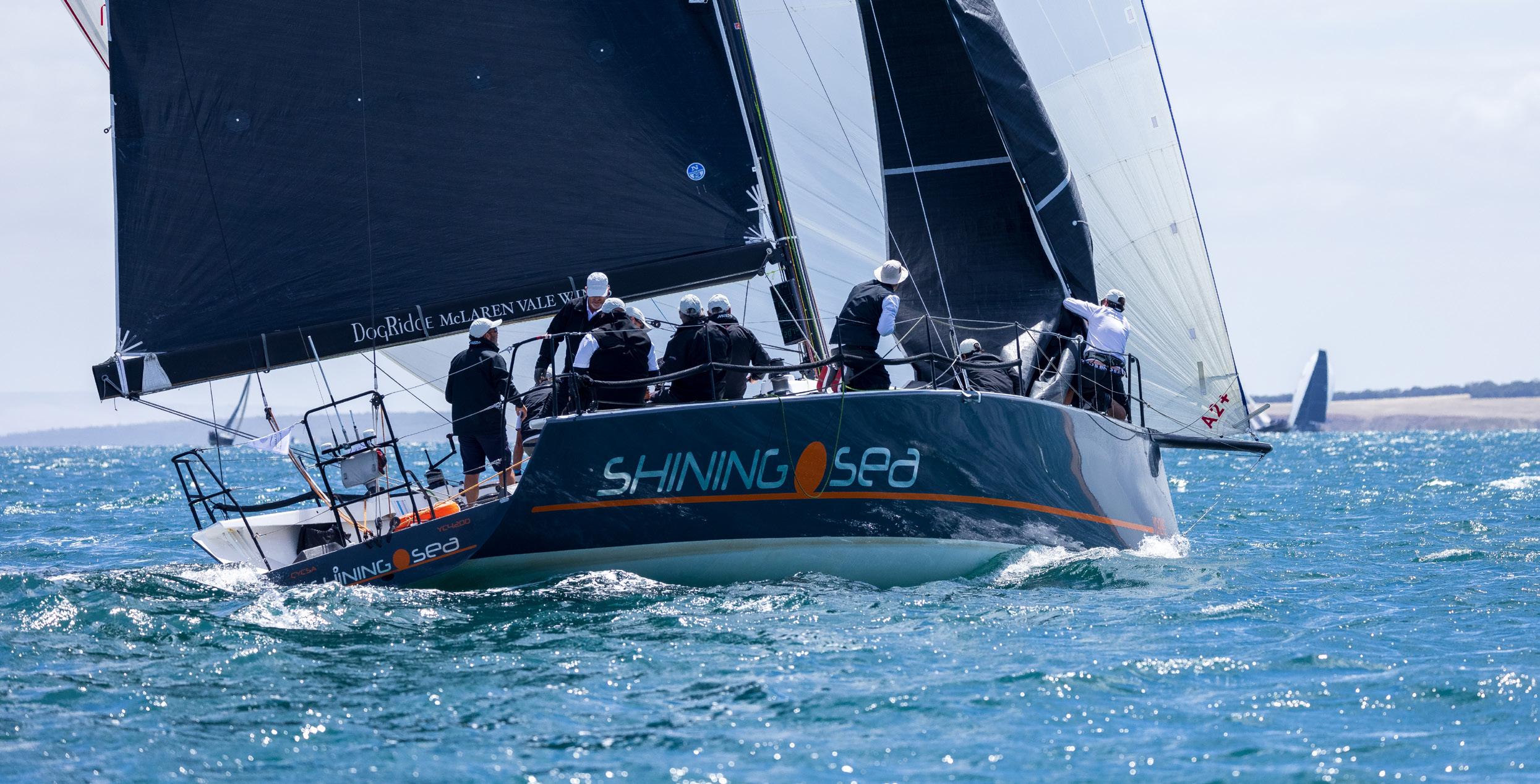PROPONENTS The CYCSA was a welcome proponent in a Gulf St Vincent metropolitan waters seagrass rehabilitation project in December 2020 to January 2021 in partnership with OzFish Unlimited, Green Adelaide Landscape Board, SARDI, ECF, EPA-SA, Navico Marine Electronics, Boating Camping Fishing, Clean Seas Seafood and Aquatic Biosecurity Pty Ltd. CYCSA management and members participated in providing a wonderful venue and labour for the seagrass seed propagation facility which drew plenty of interest from Club members. Several CYCSA members also volunteered their vessels to disperse seagrass seed sown sandbags out into the gulf.
Seagrass loss in South Australia is a major issue for coastal protection in South Australia. Seagrasses provide a range of benefits including nutrient sequestration, reduction of wave action erosion, reducing sand movement and provide significant habitat for a wide range of species. Restoration of the ‘blue line’ (the seagrass line) has also been identified as a priority issue for the community in social surveys and seagrass is the most efficient natural habitat to rehabilitate as a carbon sink for climate change in Australia. It outperforms grasslands, salt marsh, mangroves and even rainforests.
Addressing seagrass loss is addressing a significant coastal risk to prevent further decline of our aquatic species and the
22
industries that depend upon them. Seagrass provides nursery and foraging habitat for our local fish species which have seen recent declines so it was great to see so many enthusiastic people volunteering to help with this project. The value of seagrass for the fisheries alone is worth $21,600 per hectare of seagrass, per annum. South Australia has significantly degraded seagrass meadows in Gulf St Vincent as a result of a number of impacts. Over one-fifth of our seagrass has been lost. Adelaide’s metropolitan waters were the site of a seagrass strip mining lease in the early 1900s where the fibres were used in men’s suits, ropes and as packing in explosives. From 1949-1995 seagrass was then impacted by the constant high nutrients being pumped out to Gulf St Vincent from sewerage treatment outfalls along the coast. These sewerage outfalls have since been turned inland and are tertiary treated by government using innovative techniques and transforming waste products into resources.
Several highly polluting industries in the Port River have also been shut down by government through not being able to meet water quality guidelines. However, whilst these impacts have suitably been addressed by the South Australian Government, seagrass meadows require active remediation as natural seagrass recruitment, even in the absence of pollution and storm events, is extremely slow. It is in the order of hundreds of years so it needs a helping hand.
















